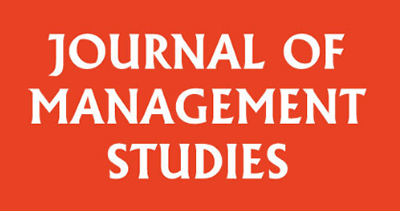
Humor at work is serious business. Research shows that telling jokes can improve workplace relationships, increase how happy people feel at work, and help relieve workplace stress. Unfortunately, scientists have spent far too much energy trying to figure out whether different types, or styles, of humor influence the workplace. Our research in the Journal of Management Studies explains why this strategy has fallen short of exposing the key insights needed to fully understand the implications of humor in the workplace. But first, we had to show why a common practice in the way scholars measure humor at work is flawed.
What we thought we knew
Over the last twenty years, scholars have used insights from personality psychology that linked different styles of humor to an individual’s wellbeing to try and understand how a boss’s or coworker’s use of these styles affects the colleague(s) on the receiving end of such jokes. While personality psychologists suggested that certain humor styles such as telling jokes to amuse others or facilitate relationships (i.e., affiliative humor) or to cope with stress (i.e., self-enhancing humor) would be good for a person’s mental health, they also suggested that making fun of yourself (i.e., self-defeating humor) or others (i.e., aggressive humor) would be detrimental. Management scholars simply assumed that if these styles of humor were good/bad for individuals, they would similarly be good/bad for the joke recipients.
The problem with this assumption is twofold:
- First, it mixes up what someone does (telling a joke) with why they did it (the motive) and how people feel about it (audience judgement), creating circular definitions and murky data.
- Second, the good/bad distinction from personality psychology falls apart when the styles are employed in an interpersonal context. These flaws are easily exposed when we recognize that the use of sarcasm, ridicule, or teasing (i.e., aggressive humor) can be par for the course, and can even bring people closer together, in one workplace, whereas in another, such humor would have people running to the Human Resources Department. As another example, when a boss makes fun of themselves in front of employees (i.e., self-defeating humor) it might negatively affect the boss’s self-esteem, but it can also enable the boss to minimize distance between themselves and their subordinates, leading to better leader-follower relationships.
What we recommend instead
We felt a course correction for the study of humor at work was needed. To support our point, we conducted four studies with over 1000 participants to demonstrate the problems inherent in studying humor from a styles approach. We examined the outcomes of the humor styles in a head-to-head test against a simple measure of humor frequency.
What we found revealed the shortcomings of the humor styles approach and suggested a way forward.
Management Scholars Should Not Rely on the “Humor Styles”
- It is impossible to create a measure of the humor styles for measuring interpersonal humor at work that does not mix up the joke telling with the purpose for telling the joke and the audience’s reaction. This is because what differentiates the humor styles is the intention and purpose of the humor.
- Empirically the four styles collapse into a simple positive vs. negative split and add little predictive power beyond a basic “how often does your boss use humor?” question. A boss’s use of affiliative, self-enhancing, and self-defeating humor affects employees in a similar positive way, suggesting that what matters more is the frequency of humor than the boss’s humor style.
- Our results showed that aggressive “jokes” weren’t seen as jokes at all. People just don’t see this humor style as humor.
Why Separating Motives Matters
Based on our observations, we comprised the Model of Organizational Humor Motives (MOHM), which provides a clearer framework for studying humor by separating:
- Humor expression (the behavior)
- Audience judgement (“Was it funny/appropriate/useful?”)
- Inferred motives (agentic-achieving goals; communal-building relationships)
- Outcomes (e.g., audience reactions, perceptions about the joke teller, relationship with the joke teller)
Why it matters outside academia
At the heart of management scholars’ desire to use the humor styles approach was the goal of offering prescriptions for leaders and employees alike. Afterall, an ill-timed or ill-received joke can make the workplace feel awkward and can damage how people feel about their colleagues. Our research offers some helpful insights.
| Practical question | Insight from our findings |
| Should leaders use humor at work? | Yes—but aim to convey both the desire to get work done (agentic) and that you care (communal). That mix boosts both respect and liking. |
| Is “put-down” humor always problematic? | Not necessarily. If the audience sees it as communal or playfully agentic, it might increase trust and cohesion. The perceived motive matters more than the humor style. |
| Should I make fun of myself at work? | Maybe. Self-deprecating jokes seem to increase positive emotions in the audience and improve relationships—but making fun of yourself at work may still hurt your own wellbeing. |
| Why didn’t my joke land well? | Ask yourself “What motive did people read into that joke?” Offense likely stems from perceiving self-serving agentic motives along with a lack of communal care. |
Moving forward
- Focus on motives, not styles. We invite researchers to design measures of humor motives, particularly agentic and communal, and urge managers to focus on conveying both.
- Pay attention to context and audience judgement. Utility and appropriateness of humor is likely to differ across organizational contexts, so managers must get to know their audience.
- Use mixed methods. Experiments that can tightly control alternative explanations can unveil what leads to audiences’ perception of humor motives. Qualitative or ethnographic research can identify other possible motives and reactions to humor along with insights for how people involved in a humor exchange navigate uncomfortable interactions stemming from failed or inappropriate humor. While we wait for new research insights to emerge, treat humor like any leadership skill: pilot it, “read the room,” and iterate.

0 Comments